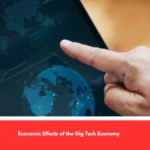Bruzque discusses what links them to the UK bicycle bubble more than a century ago and the latest fads surrounding non-fungible tokens, startups, and electric car companies. We’ve been experiencing a tech gold rush for more than 10 years now, in some corners, that absolutely makes no sense. When the craze fades, if it ever does, people stand to lose a fortune. But on the whole, tech manias do leave behind good things. As my colleague Erin Griffith said: “Bubbles, even if they’re messy, lead to progress. So. which one do you prefer? Bubble or Boom?
I recently interviewed William Quinn, a professor at Queen’s University Belfast and author of the book Boom and Bust, about the history of economic bubbles, including the 1929 US stock market crash and the financial crisis more than a decade earlier. The book identified three basic conditions that occurred in bubbles: affordable borrowing, or people having a lot of money saved. It’s becoming cheaper and cheaper to buy and sell assets, as is happening now with stock trading apps like Robinhood. There’s also a mentality that asset prices are only meant to go up.
Is There a Tech Bubble Coming?

All of those conditions, as Griffith recently wrote in a hilarious and helpful article, are present right now. That’s part of the reason we’re seeing rallies in meme stocks like GameStop, the hype over NFTs, and spectacular initial public offerings, including the one that left Airbnb’s CEO speechless. However, Quinn also told me that tech bubbles are different from other boom-bust cycles in important ways. For one, they don’t usually ruin the world. “I’m not worried that NFTs will cause the next financial crisis or something like that, he said.
Unlike housing bubbles, tech bubbles don’t typically inflate based on borrowed money, which can cause domino effects. In general, speculative technologies are somewhat disconnected from the rest of the economy. Furthermore, Quinn said that when technology bubbles burst, they can leave something positive in their wake. This is where the bicycle bubble comes in. The invention of the “safety” bicycle in the late 19th century was a revelation, and the basic design remains relevant to this day. We may not think of the bicycle as technology, but it was a significant invention for relatively reliable and affordable transportation.
Our Tech Positioning

It also sparked a frenzy of British bicycle manufacturers who went public, recorded sky-high stock prices, and then collapsed. What remained of all this, according to Quinn, were individuals and companies that, in some cases, helped usher in new innovations in cars, motorcycles, and tires. Some of the bicycle pioneers are still around today. Just like with the bike bubble, there were positive effects after the dot-com bubble in the late 1990s in the United States. Some companies survived and even thrived, including Amazon. The telecom companies that declared bankruptcy left a legacy of useful internet paths that facilitated an online boom.
More recently, the decline of cryptocurrencies several years ago led more people to be interested in the benefits of promising underlying technology, like blockchain. Bubble mania can be a distraction,” Griffith said, but continued: “The idea many have of the technological and financial world is that a mania or frenzy draws attention, enthusiasm, excitement, and talent to something new. I don’t want to ignore the damage caused by technological collapses. When bubbles burst, people lose their jobs and, in some cases, their entire savings.
What is a tech bubble?

Quinn said he believes regulators need to do more to prevent charlatans from swindling people and walking away with millions in their pockets. Griffith said he worries that people who end up bankrupt in the wake of tech fads will become bitter. Quinn said he believes bubbles, which were relatively rare between the 1920s and 1980s, have begun to occur more frequently. Money and news circulate extremely quickly around the world, helping to fuel manias. Bubbles are perhaps a constant part of modern life, with all the potential harms and benefits they bring.
The tech landscape is an ever-evolving ecosystem, a complex tapestry woven from the threads of innovation, market demands, and the relentless pursuit of growth. It is a terrain marked by rapid change, where today’s pioneering company can become tomorrow’s obsolete operation. This dynamic environment is the breeding ground for startups, particularly those with unicorn status: privately held companies valued at over $1 billion. These unicorns are often seen as the leaders of the tech industry, and their fortunes are closely tied to the health of the sector as a whole.
Conclusion

From an investor’s perspective, these startups represent both high-risk and high-reward opportunities. They invest capital in these companies, betting on their potential to disrupt existing markets and create new ones. On the other hand, industry veterans tend to view unicorns with a combination of skepticism and guarded optimism, acknowledging the transformative potential of these companies while at the same time being aware of the dangers of rapid scaling. Innovation and market disruption: Unicorns tend to be linked with disruptive innovation.
Take, for example, Airbnb, which revolutionized the hotel industry by allowing owners to rent out their spaces to travelers. This not only disrupted traditional hotel chains but also paved the way for a new sharing economy. Investment and valuation: The influx of venture capital is a key factor in the growth of unicorn startups. Consider SpaceX, which has attracted significant investment due to its ambitious goals and milestones, such as reusable rockets. Its valuation reflects investors’ belief in its potential to dominate the space industry.





